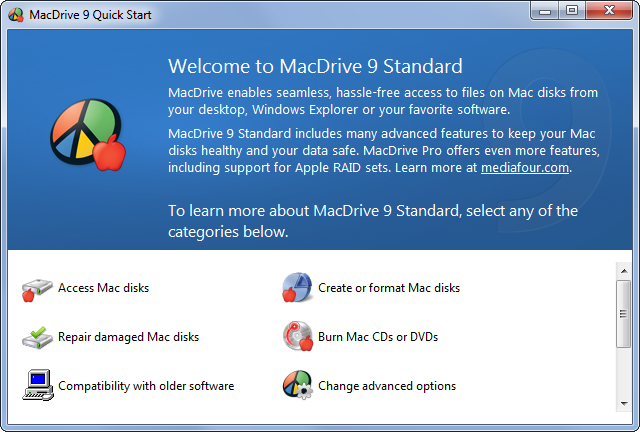Usb Format Tool For Mac
HP USB Disk Storage Format Tool is a Windows- based format utility. It can format any USB Flash drive in FAT, FAT32, or NTFS file systems and creates DOS startup disks that can help boot a PC. HP USB Disk Storage Format Tool is portable freeware, so you can carry it on a USB drive and format other. Best Video Software for the Mac How To Run MacOS High Sierra or Another OS on Your Mac Best Graphic Design Software the Mac Stay Safe with Best Free. HP USB Disk Storage Format Tool 2.2.3.
Create USB installer with Boot Camp Assistant After downloading the ISO file, you'll need to use Boot Camp Assistant to move it to a bootable USB drive. • Insert a USB flash drive to your Mac. Make sure it's at least 8GB, which is usually marked on the USB stick.
You can also check by right-clicking the USB drive on your desktop and clicking Get Info. Check if the number next to Capacity is at least 8GB. All the files in the drive will be deleted, so make sure there are no important documents inside. • Open Boot Camp Assistant. The easiest way to launch it is through Spotlight Search, which you can bring up by pressing Command and Spacebar.
Press Enter to launch the app. • Check the box for 'Create a Windows 7 or later version install disk' and deselect 'Install Windows 7 or later version.' • Click Continue to proceed. • Boot Camp Assistant will automatically locate the ISO file from your downloads folder, but make sure it is the right file. Click the 'Choose' button and locate the ISO file. Mac tool for hard drive spindle problem. Make sure the destination disk is the USB thumb drive you've inserted.
• Click Continue. It can take about 20 minutes to format and set up the USB installer on the Mac. • When Boot Camp Assistant is done, the USB drive will be renamed to WININSTALL.

Click Quit to close the app and then Eject the USB drive. You now have a bootable USB drive with the Windows 10 installer.
You can use it to from scratch. We told you it was easy! Have you tried creating a Windows 10 installer USB drive from a Mac before? Did you encounter any issues? Let us know your experience in the comments! This post may contain affiliate links.
See our for more details.
If you can’t see your USB drive in Explorer, search for “Create and format hard disk partitions” to open Windows’ Disk Management console. From here you can see all connected drives – even ones that aren’t currently usable in Windows. If need be you can wipe your USB device and reformat it as required. How to format a USB drive on a Mac Step one To format a USB on a Mac, you can format your drive using Disk Utility. You’ll find this tool in your Applications folder, within the Utilities subfolder – or simply search Spotlight to find it (press Cmd+Space, then type its name). Step two When Disk Utility opens you’ll see a list of drives in the left-hand pane, with the partitions on each one nested beneath each entry.
To reformat your USB disk, click on its name in this pane, then switch to the Erase tab in the main interface (if it’s not already selected) and hit Erase to wipe the drive. How to format a USB drive: which format?
If you follow the instructions above then Windows will, by default, format your disk using Microsoft’s NTFS filesystem, while a Mac might suggest the Mac OS Extended filesystem. These formats are sensible defaults because they support all the features of their respective operating systems, such as native compression and encryption. However, neither is suitable if you want to move files back and forth between Macs and PCs: OS X can read NTFS volumes, but it can’t write to them, while Windows in its default configuration can’t access HFS+ disks at all. There are free drivers available, but again these are limited to read-only access. To use your USB disk on both Windows and OS X, therefore, you’ll need to use a different filesystem. You can choose this from the drop-down menu in Windows' Format.
Dialogue, or in the Erase pane of Disk Utility. In most cases we recommend you select Microsoft’s exFAT format: this will give you full read and write access in both Windows (Vista or later) and OS X (Snow Leopard 10.6.5 or later).
Format Usb On Mac

Hp Usb Disk Storage Format Tool For Mac
If you need compatibility with systems that are older than this, you’ll need to fall back to the ancient FAT32 format. This is supported by all versions of Windows and OS X (as well as Linux), but it has the drawback of not supporting individual files larger than 4GB – which can be a pain if you work with large video files or databases. On a Mac, you can format any disk as FAT32 by simply choosing “MS-DOS (FAT)” from the dropdown menu in Disk Utility before you click Erase. For historical reasons, Windows won’t offer FAT32 as an option if your disk is larger than 32GB, but you can format a disk of any size by opening a Command Prompt and typing format h: /fs:fat32 /q, where h: is the letter of your removable drive and the /q parameter specifies a quick format – assuming you don’t want to wait around for Windows to check each sector of the drive for errors. How to format a USB drive: allocation unit size. As well as choosing a disk format, Windows also invites you to specify an “Allocation unit size”.